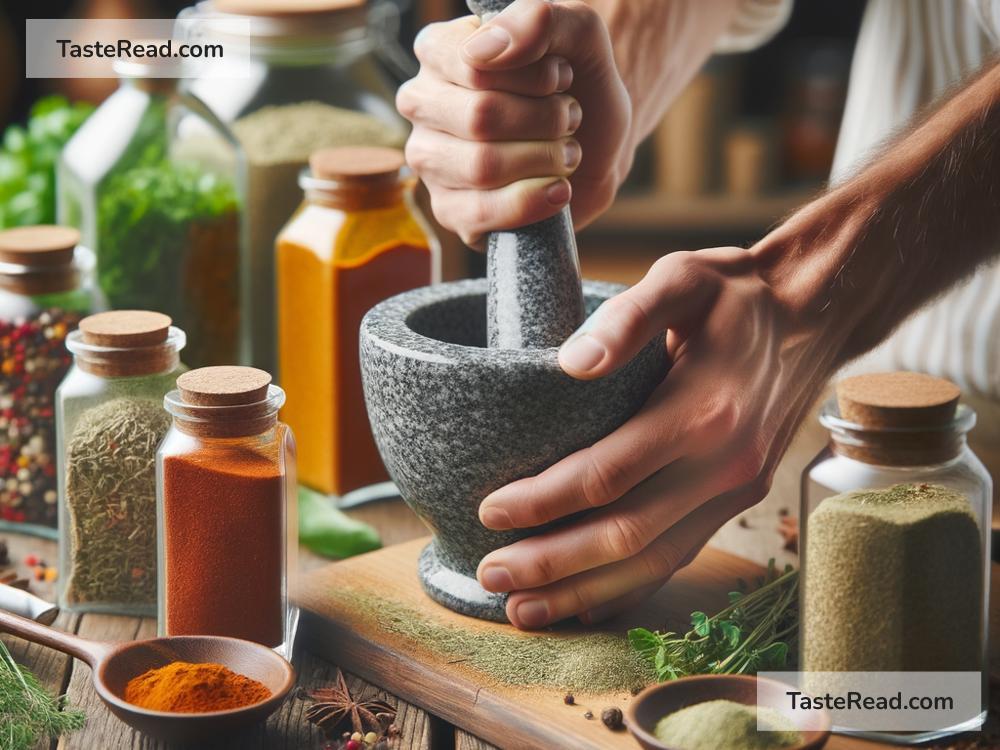Mastering the Art of Blending Flavors Using Spice Mixes and Pastes
When it comes to cooking, the use of spices can transform a simple dish into something truly special. However, the art of blending these flavors is where the magic really happens. By mastering the use of spice mixes and pastes, you can elevate your dishes, infusing them with depth, warmth, and complexity that tantalizes the taste buds and delights the senses. Let’s dive into the world of spices and discover how you can become a maestro of flavor in your own kitchen.
What are Spice Mixes and Pastes?
Before we get into the nitty-gritty, let’s define what we’re talking about. Spice mixes are a combination of dried spices that are ground together. These can vary from the simple, like mixing together salt, pepper, and garlic powder for a basic seasoning, all the way to complex blends like Garam Masala or Chinese Five Spice, which contain a symphony of different flavors.
Pastes, on the other hand, mix spices with wet ingredients like oil, vinegar, or water, creating a thick substance. You might be familiar with curry pastes or pesto – these are great examples of how spices can be turned into versatile and flavorful pastes.
Why Use Them?
Using spice mixes and pastes can drastically cut down your cooking time, as they’re ready to go straight into your cooking pot, eliminating the need to measure out several different spices each time. More importantly, they help you achieve consistent flavor, ensuring that your dishes taste incredible every time you make them.
Getting Started with Spice Mixes
Creating your own spice mixes is not only easy but incredibly satisfying. Start with recipes for spice mixes from cuisines you love, be it an Italian herb mix or a Mexican taco seasoning. The beauty of making your own is that you can adjust the quantities of each spice to suit your taste – more cumin if you like your mixes earthy, or a touch more chili powder for that extra kick.
One fundamental principle to remember is to use fresh, high-quality spices. Over time, spices lose their potency and flavor, so starting with fresh spices will ensure your mixes pack a punch.
Exploring Pastes
Making pastes might involve a bit more effort than dry mixes, but they’re worth their weight in gold in terms of flavor. Most pastes begin with the same foundation: choose your spices, and then add your wet ingredients. Garlic, ginger, and onions are frequently used bases, alongside oils or vinegars to create a thick, rich paste.
The trick with pastes is to balance your flavors. Remember, you can always add more of an ingredient, but it’s much harder to correct if you’ve added too much. Start with small quantities, taste, and then adjust.
Using Your Mixes and Pastes
Now that you’ve made your spice mixes and pastes, what next? The possibilities are endless. Rubs for meats, flavor bases for soups and stews, marinades for veggies – your homemade concoctions are a gateway to a world of delicious possibilities.
A simple guide is to think about the flavor profiles of what you’re cooking. For dishes with a rich, meaty base, warmer, earthier spices like cumin, coriander, and turmeric work wonderfully. For lighter dishes with vegetables or fish, consider brighter notes from spices like lemon pepper or dill.
Experiment and Learn
The real joy of working with spices comes from experimentation. As you get more comfortable, start mixing and matching, creating your own unique blends and pastes. Make notes of what works and what doesn’t – cooking is a journey, and every great chef has their own book of secrets and successes.
Remember, while recipes are guidelines, your palate is the ultimate judge. Trust your taste and don’t be afraid to adjust as needed.
Conclusion
The art of blending flavors using spice mixes and pastes is a rewarding skill that transforms cooking from routine to art. It’s about understanding the balance of flavors, experimenting with different combinations, and adjusting to taste. By mastering this aspect of cooking, you not only enhance your dishes but also deepen your connection with the ingredients you use and the meals you create. So go ahead, unlock the spice cabinet, and start your flavor exploration today. Happy cooking!


